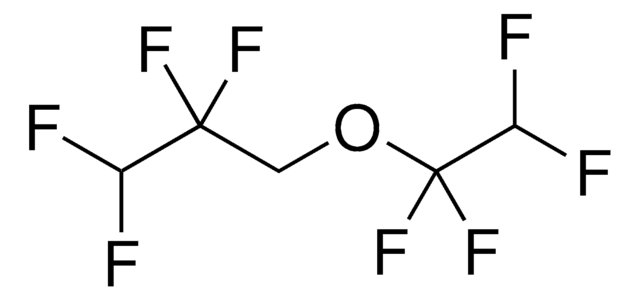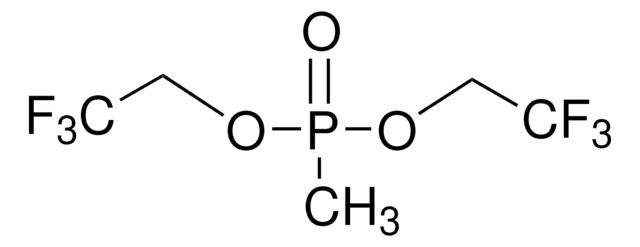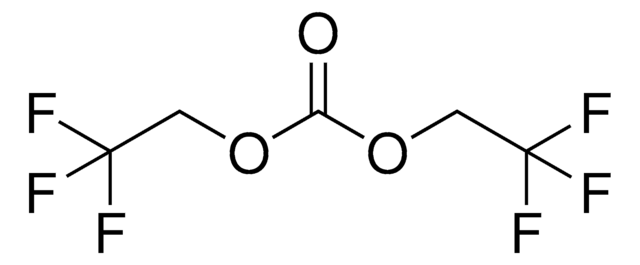287571
Bis(2,2,2-trifluoroethyl) ether
98%
Sinónimos:
2,2,2-Trifluoroethyl ether, Flurothyl
About This Item
Productos recomendados
assay
98%
form
liquid
refractive index
n20/D 1.300 (lit.)
bp
62-63 °C (lit.)
density
1.404 g/mL at 25 °C (lit.)
functional group
ether
SMILES string
FC(F)(F)COCC(F)(F)F
InChI
1S/C4H4F6O/c5-3(6,7)1-11-2-4(8,9)10/h1-2H2
InChI key
KGPPDNUWZNWPSI-UHFFFAOYSA-N
¿Está buscando productos similares? Visita Guía de comparación de productos
Application
For use with
signalword
Danger
hcodes
Hazard Classifications
Eye Irrit. 2 - Flam. Liq. 2 - Skin Irrit. 2 - STOT SE 3
target_organs
Respiratory system
Storage Class
3 - Flammable liquids
wgk_germany
WGK 3
flash_point_f
33.8 °F - closed cup
flash_point_c
1 °C - closed cup
ppe
Eyeshields, Faceshields, Gloves
Elija entre una de las versiones más recientes:
¿Ya tiene este producto?
Encuentre la documentación para los productos que ha comprado recientemente en la Biblioteca de documentos.
Los clientes también vieron
Nuestro equipo de científicos tiene experiencia en todas las áreas de investigación: Ciencias de la vida, Ciencia de los materiales, Síntesis química, Cromatografía, Analítica y muchas otras.
Póngase en contacto con el Servicio técnico











